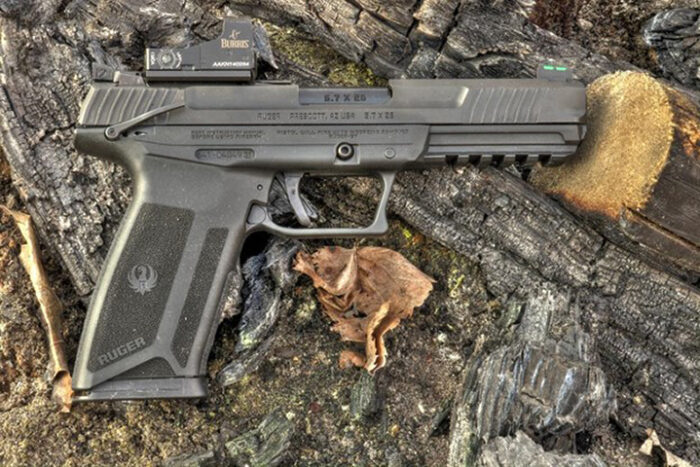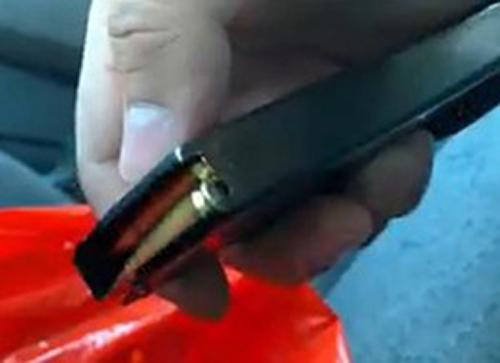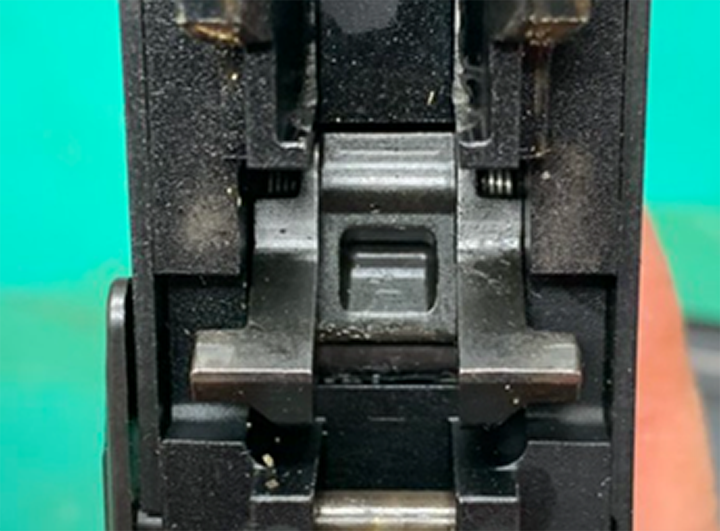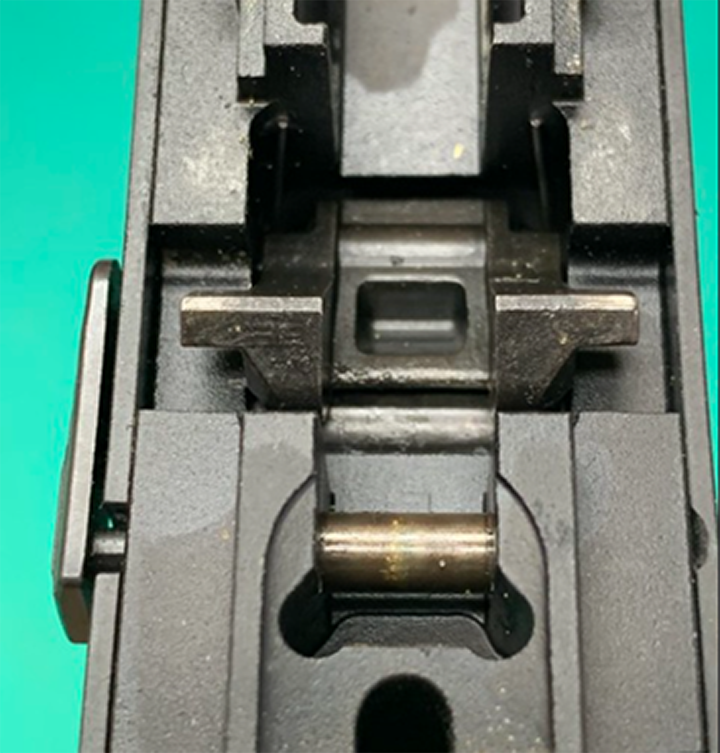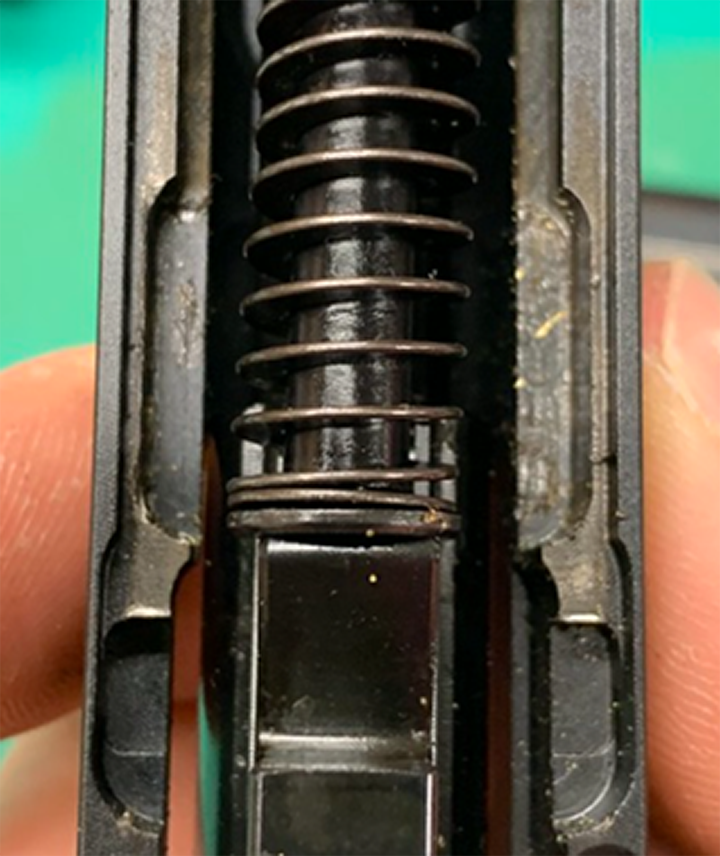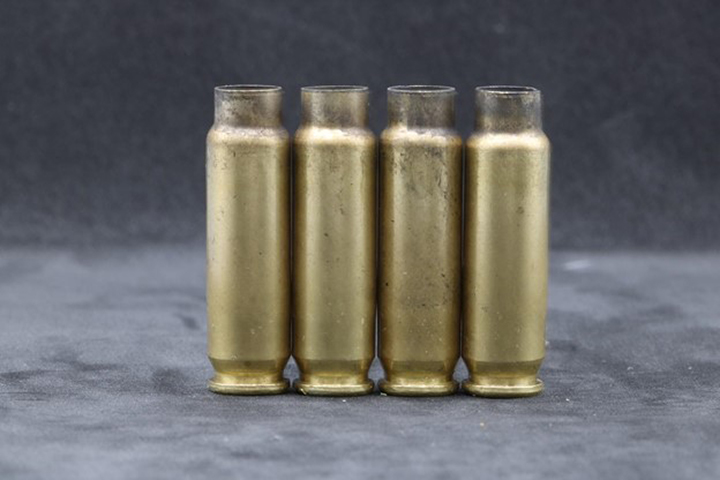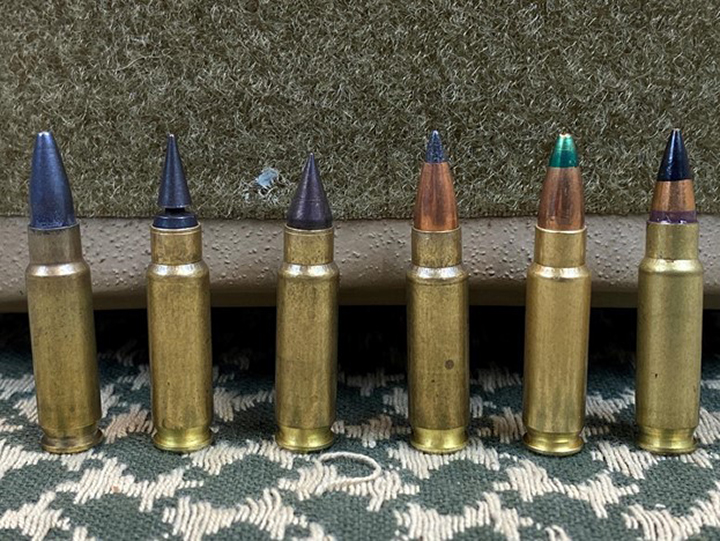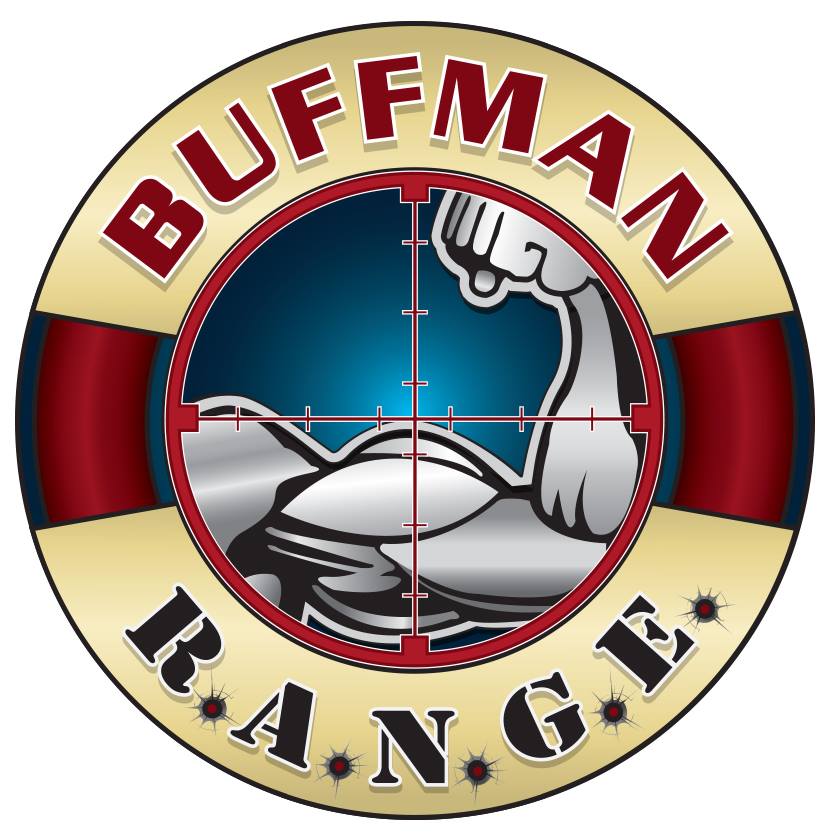21! Blackjack! The Ruger 57 Review
One of the guns we were excited to see debut at Shot Show this year was Ruger’s Model 57 (pronounced five-seven), chambered in one of my favorite and most tested calibers: 5.7x28mm. This full-sized, polymer frame, steel slide handgun weighs just 23 ounces with an empty magazine.
To date, the Ruger 57 is among a select few U.S.-manufactured pistols offered in 5.7x28mm. There is the original FN Five-SeveN, Masterpiece Arms MPA 5.7, Excel Arms Accelerator Pistol, and now the Ruger 57. CMMG also offers a few AR variants that can be configured as an AR-15 pistol, and Diamondback has released their DBX in 5.7. A pistol offering from the UAE (Fort-28) exists as well, but at this time, no one has attempted importation. Compared to a caliber like the 10mm, those numbers are very small.
Our Ruger 57 has a 4.94-inch nitride barrel. Its overall footprint is very close to that of the FN Five-seveN. A fiber optic front sight sits in front of a larger lightning cut in the slide. The rear sight is adjustable, and the slide is drilled and tapered to accept adapter plates to mount a micro red dot sight. At the time of writing, no tech MRDS exists to allow any co-witness with the factory sights, and the only plate available is for a Burris FastFire footprint.
Other standard features include a reversible push-button magazine release, a shrouded slide release/stop, and long ambidextrous thumb safeties. The thumb safety mechanism on the Ruger 57 simply blocks the trigger bar from actuating the hammer, but it does not lock the hammer out in any way. A firing pin drop safety is not present on the Ruger 57, and the manual warns against carrying one in the chamber for drop safety reasons. Several online forums raised this concern, and after performing a drop test at varying angles (on and off camera), I could never get the hammer to drop. Likely this warning is more CYA than a safety concern, but time will tell.
The Ruger 57 has a blued steel slide, and a polymer frame. However, unlike the FN Five-seveN, the Ruger’s 57 frame is non-serialized. The Ruger has an internal chassis like the Sig 320/M17, which is considered the firearm. This could open the possibility for Ruger or an aftermarket manufacturer to offer different grip modules.
The Ruger is fed from a metal 20-round magazine with a plastic base plate. I was able to fit 21 rounds in both of my samples and both were able to feed just fine. There have been reports of a few out-of-spec magazines that bind up past 15 rounds and/or don’t feed well, but Ruger’s customer service has committed to replacing those. Because of the use of metal magazines, they are thinner than the FN’s Five-SeveN polymer magazine. The grip of the Ruger is thinned as well.
Ruger describes the trigger on the 57 as “secure action,” meaning it is a pre-cocked double action. After the internal blade safety on the trigger is moved out of the way and the trigger approaches the end of its travel, it finishes pulling the hammer back before releasing. The pull rate was in the 5-pound mark. Reset is not very pronounced, and over the course of review, there were a few times I didn’t ride the release out far enough, ending up with a dead trigger. Perhaps with time, aftermarket solutions will be produced.
The takedown is different from other handguns, like the Glock. You need to press the takedown lever out and then rotate down to remove the slide. It is possible to push the lever out too far, so be careful when pushing it from the right to the left. You do not have to pull the trigger to remove the slide. Under the hood, you can see the cam-delayed operating system of the Ruger, which is of almost identical operating principle to FN’s Five-SeveN. The barrel itself does move the slightest bit when firing, and the operating principle is quite strong. The 5.7x28mm cartridge has a max operating pressure of 50,000 PSI.
During my evaluation, I put approximately 720 rounds through the Ruger 57, from subsonic to the fastest 5.7x28mm available (Elite S4M/T6B). All bullet variations fed just fine. There were some hang ups with subsonic ammo, but those typically work best with a suppressor attached. At the time of writing, neither Ruger nor aftermarket sources have produced a threaded barrel for the Ruger 57.
I noticed during the evaluation that the chamber and barrel specifications allowed for hotter ammo to produce velocities of almost 100 fps faster than the FN Five-seveN. The Ruger barrel is almost .25 inches longer than the FN, but that small increase would not equal the gains we saw.
The 5.7x28mm cartridge has been around since 1990. Over the years, varying law enforcement and military outfits have deployed it in one capacity or another. There are reports of departments dropping it after sub-par performance. Typically, most law enforcement agencies would issue the armor-piercing variant, known as SS190AP. It’s a 31-grain bullet that is a scaled down clone of SS109 (M855). It employs a hardened steel penetrator, but unlike SS109, it uses an aluminum core. It offers some pretty unparalleled performance against soft IIIA armor, but it was designed to be limited risk and has difficulty exceeding FBI protocol penetration depths of 12 inches.
On the civilian side, up until 2020, your only offerings were SS197SR from FN, American Eagle TMJ, and a training counterpart to SS190: SS192/195/198LF. The SS197SR is a 40-grain Vmax projectile, and it maxes around 1725 fps from the pistol barrels. Even with the ballistic tip, it has a less-than-stellar ballistic performance. The American Eagle TMJ is 40-grain as well and is about 5-10 percent slower than SS197SR. Being a short bullet, it doesn’t bring a lot of tissue disruption. The SS192/195/198LF is a 28-grain aluminum core bullet. While offering blistering speeds (2100-2200+ fps) from the pistol, its penetration maxes out in the 9-10-inch mark in gel. It does offer some advantages in soft armor, but generally only Aramid/Kevlar fibers.
2020 did bring 5.7 fans a better performing round from Speer, a 40-grain bonded Gold Dot. Velocities obtained in the pistol get us to around 1800 fps, and penetration depths over the FBI minimum, even through barriers like sheet metal in various barrel lengths. The extra velocity above the SS197SR allows it penetration of aramid level IIIA panels. As of publication of this article, manufacture of this round is not in full production yet. A complete video detailing my assessment of the Gold Dot 5.7 load can be found here:
For those who are looking for maximum performance in 5.7, smaller shops such as Elite Ammunition, Vanguard Outfitters, and R&R Weapon Systems offer some copper projectiles in some gnarly designs that really up the game with the 5.7x28mm round, even from the Ruger’s 4.94-inch barrel. A rather large ballistic test was conducted for agency use, and they found Elite’s T6B, DevastaTOR 2.0/3.0, and Vanguard’s Black Dragon Fang to be very effective for self-defense or duty use. The reports are available here:
https://drive.google.com/file/d/1lf0pq7dvAHu6pJx2adH_zfwQucTdGpNP/view?usp=sharing
https://drive.google.com/file/d/1Z6gdk_JdqKkYlUHqABWwb8Bh8dK2rHqo/view?usp=sharing
The Ruger 57 is a win in my book. If you’re looking to get into the 5.7 game, the Ruger’s MSRP is $799, and as things slow, is a solid buy in the $650 range. The OG FN Five-seveN MSRP’s is close to around 50 percent more. If you fancy traditional thumb safeties and thinner grip the Ruger 57 is for you. Ruger offering the 57 brings more attention to the 5.7x28mm platform, and with that attention, hopefully accessories, and more ammo!
Firearms are the main focus for Matt’s channel, Buffman R.A.N.G.E. From handguns to shotguns, ammunition, gear and more. His Motto, which he added to the channel name stands for Reviewing Ammo-N-Guns Everyday (R.A.N.G.E) Matt celebrates our 2nd Amendment Rights any way possible while maintaining a safe and educational environment.

